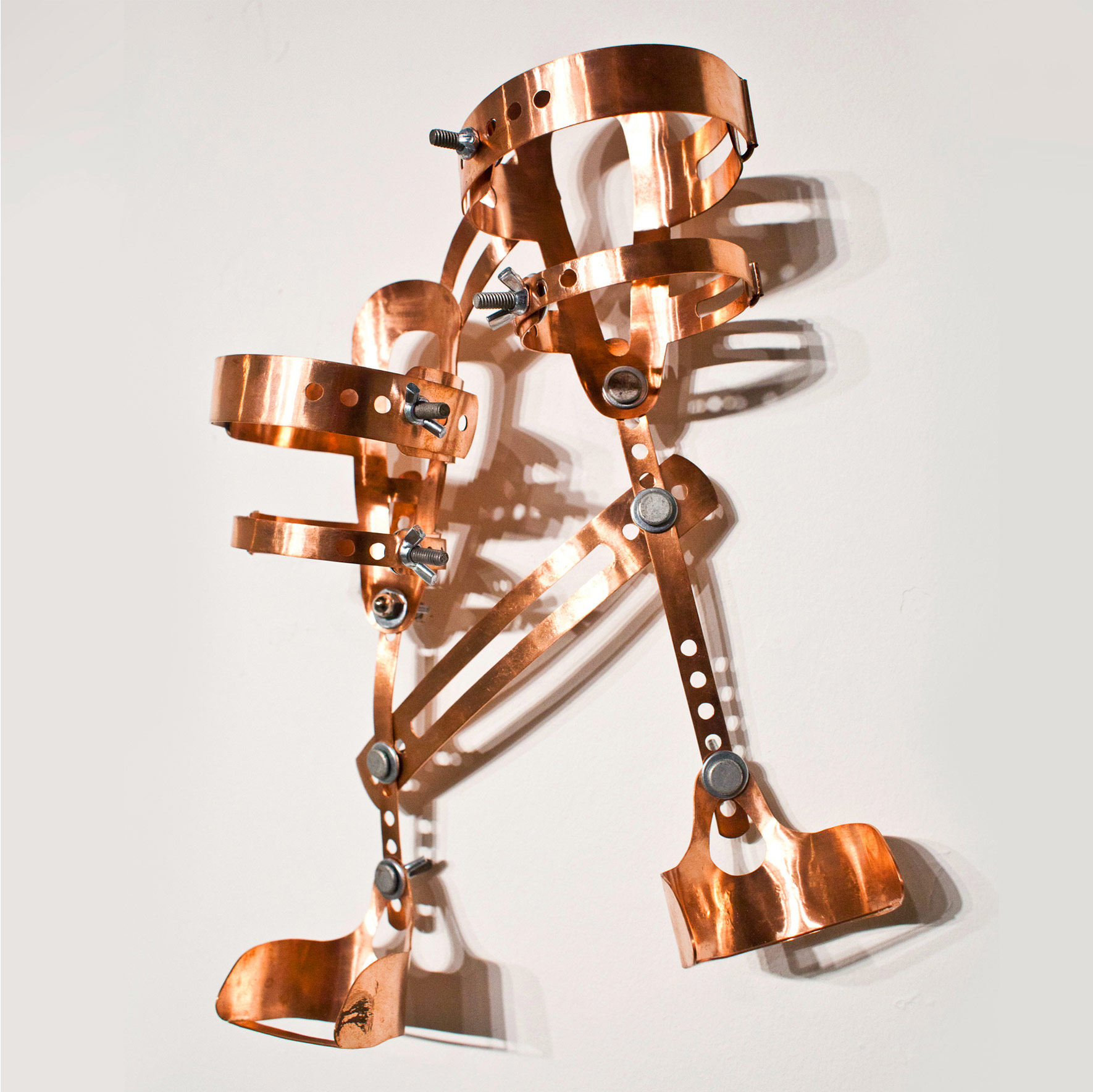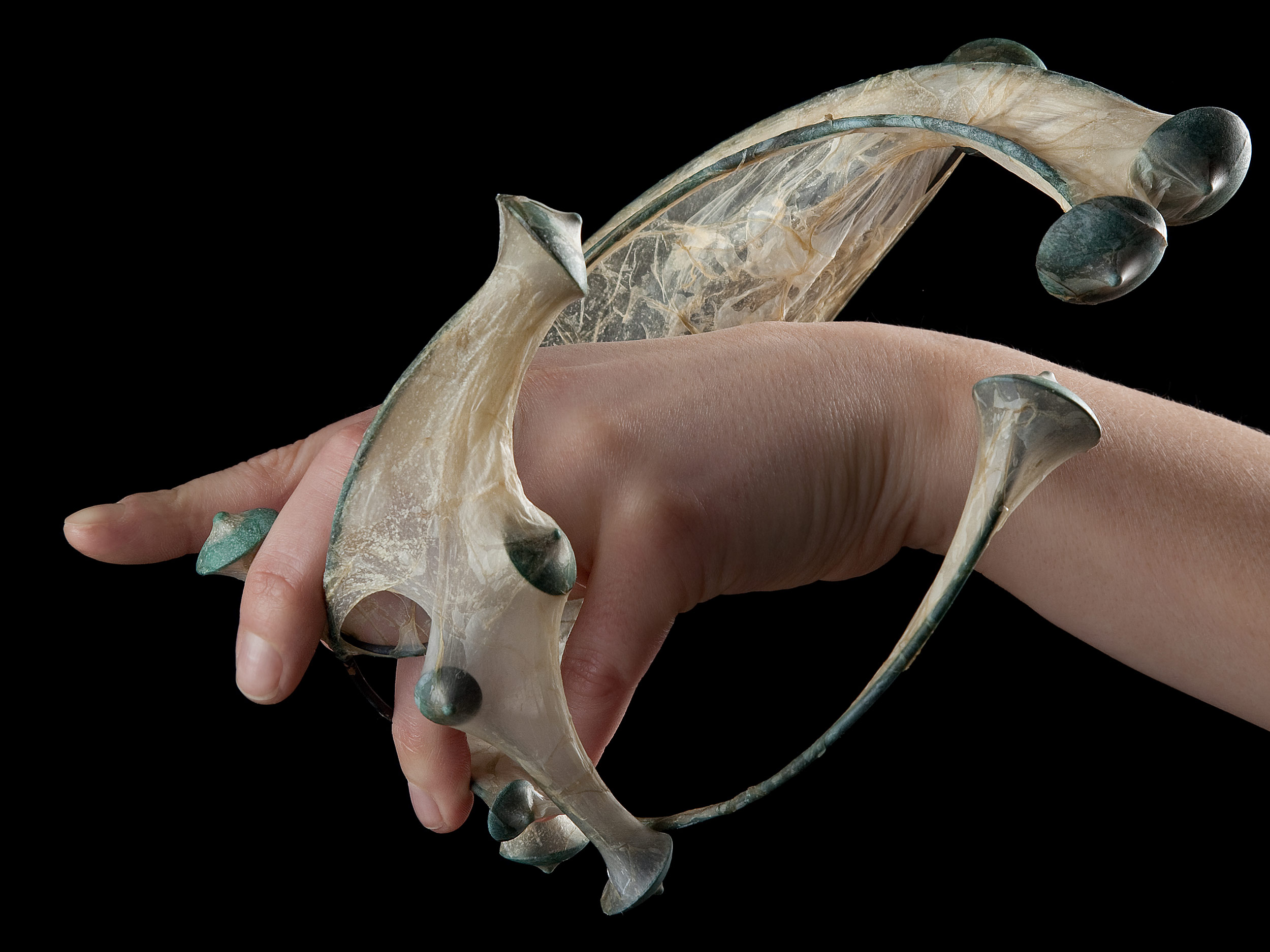
Positions
We develop our understanding of other people through interpreting another’s feelings, thoughts, and attitudes by projecting ourselves into their experiences. We make sense of someone’s behavior, for example, through observing their overt and subtle bodily actions and unconsciously determining how we would respond to the same set of circumstances. In our everyday interactions, facial expressions, body postures, and gesticulations are our biggest cues in this empathetic process. We often feel as though we can immediately identify when someone is angry or sad, confident or timid, calm or anxious, in pain or in pleasure, based on the information that we get from his or her body. Empathy and intersubjectivity are at the very root of our encounters with other people, whether one is aware of this process or not. Working from the body as a site of experience, these metal structures call attention to this commonplace phenomenon. In perceiving a structure that is readily identifiable as something that is meant to be worn, we implicitly consider the hypothetical wearer and try to make sense of what they must be experiencing. Some will interpret the experiential possibilities from an emotional perspective, while others will look from an intellectual or physical perspective. The inherent ambiguity is a central concept to this series, which is reinforced by the enigmatic aesthetic. This concept reflects the inexactness of our interpretations of other people, and positions our striving to understand others as merely the speculation of a horizon of experiential possibilities.

Meditative/Restrictive
As a former competitive gymnast, I have cultivated an attentive bodily awareness, a rigorous discipline of practice, and mindfulness of the balance between endurance and grace. This series is informed by these habits and impressions, and particularly speaks to the relation between the body and the mind. My body is held in a meditative and graceful position while wearing the work, but the mental burden imposed by the heavy and burdensome device prohibits freedom and fluidity. The struggle does not go unnoticed by the audience, who are simultaneously attracted to the aesthetic-contemplative form and yet cognizant of the constraining force that the wearer must endure. Thus, there is an intersubjective moment that is induced when encountering the work that both affirms the existence of other minds and makes one consider one’s own embodiment.

Reed Series
The need for some degree of personal space is ubiquitous among human life, but as social creatures, there is also a need to be close to one another. In this sense, there is a constant implicit negotiation between individuals as they learn each other’s different personal view of what is close enough and what is too close in order to find a common ground for dialogical exchange. This piece comments on this social phenomena by reconfiguring the boundaries between the wearer and those that surround her, simultaneously drawing in the same people that are kept at bay.

Cognizance Series
Focusing on beauty versus repulsive and the conscious manipulation of the body, the work in this series, while seemingly graceful and delicate, is very heavy and cumbersome. Restricting the body’s natural movement, it is as though the work is wearing the body rather than the body wearing it.

Body Installation
As a playful experimentation in growth and the body, this piece —through working with natural materials and displaying them in an unnatural, sterile setting— comments on the dichotomy between the organic and the inorganic.

Industrial
Commonly characterized by a cold, rigid and banal quality, the mundane and industrial materials used in this body of jewelry are given new life to create warm, fluid and rhythmic forms that compliment the natural curvature of the body.